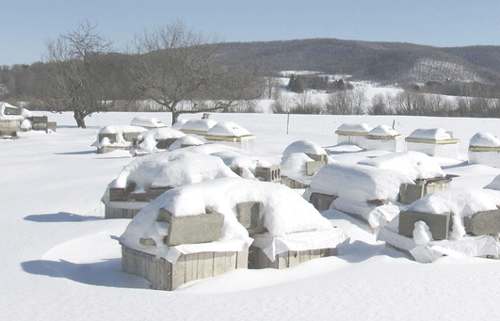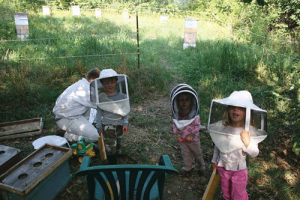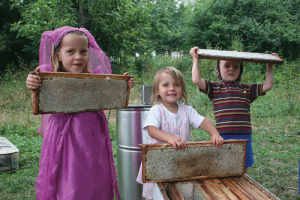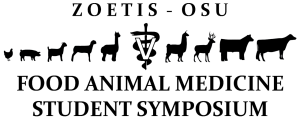By: Bob Brachmann
Over the last 33 years, starting with the discovery of tracheal mites in the U.S., there’ve been many new challenges to honey bees and beekeepers.
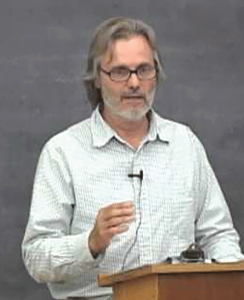 This was preceded by several decades of gradually shifting agricultural practices which likewise affected bees and their keepers. The following is an attempt to focus on one change which is seldom, if ever, mentioned but which has certainly had a major impact on the last one hundred years of apiculture in the United States.
This was preceded by several decades of gradually shifting agricultural practices which likewise affected bees and their keepers. The following is an attempt to focus on one change which is seldom, if ever, mentioned but which has certainly had a major impact on the last one hundred years of apiculture in the United States.
During the 19th and 20th centuries there was rapid advance in understanding of the biology and behavior of honey bees. Dzierzon had described parthenogenesis and the division of labor within the hive. In France, team Huber (Francis, wife Marie Aimee Lullin, niece Jurine, and assistant Burnens) advanced the understanding of parthenogenesis, caste, and general biology, and also developed queen rearing procedures. During this same period there were many improvements in beekeeping methods, for instance, in New York, Quinby advanced methods of honey making, honey processing and queen rearing. In Austria, Hruschka built a radial extractor. Probably the most important development in beekeeping methods came, once again, from Dzierzon, who discovered ‘bee space’, this discovery followed by both Dzierzon and Langstroth each developing a moveable frame hive. Standing on the shoulders of these leaders beekeepers now had knowledge and methods that enabled them to make beekeeping their fulltime focus.
Up to about 1920 farms were diversified. Pastures fed horses and assorted livestock. The livestock gave back to the soil, enriching it. Cover crops sometimes fed the stock, sometimes fed the soil, and sometimes fed both. Horses (mostly) and people provided the labor and, ideally, people provided ‘husbandry.’ Usually the food for all the stock (include the people here) was produced right on the farm. If we look at a farm as different ‘parts’ (not the best way to look at it, but useful here), we could list soil, stock, plants, and thought/labor. (Water and sunlight are a given, though in varying annual amounts.) On a well-run farm in 1900 each ‘part’ supported and even improved every other ‘part’, to make a beautiful ‘whole’. But in the early 1900s farms increasingly specialized. The whole was ignored and husbandry took a back seat to profitability.
Prior to 1920, the foremost names in queen breeding in the United States were in the North: Quinby and Doolittle in NY, C.C. Miller in Illinois, and Jay Smith in Indiana were considered preeminent. At around 1920, beekeeping, like the rest of agriculture, took a major turn. Beekeepers had the choice to pursue production and profits if they would abandon husbandry.
By husbandry here I’ll refer to the definition given by farmer George Henderson in his classic work “The Farming Ladder.” “One hears a lot about the rules of good husbandry; there is only one – leave the land far better than you found it. In the soil lies all that remains of the work of countless generations of the dead. We hold this sacred trust, to maintain the fertility and pass it on unimpaired to the unborn generations to come.”
In beekeeping this translates to making sure to pass on maximum genetic diversity and breed for hardy, resilient, and productive honey bees. But in the 1920s, Northern beekeepers realized that it would be more profitable if they discontinued making up winter losses by drawing from their own surviving colonies and, instead, purchased replacements from the Deep South or from California. Thus package bee beekeeping quickly came to prominence. Queen production also shifted to warm climates. Beginning in around 1920 package bee and queen ads increasingly filled the pages of both Gleanings in Bee Culture and American Bee Journal.
In 1928, an article entitled “U.S. Bee Culture Laboratory Established in the South” appeared in the American Bee Journal. It begins “A new bee culture field station known as the Southern States Bee Culture Field Laboratory, has been established by the United States Department of Agriculture at Baton Rouge, LA.” The article goes on to explain that “plans for the future work of the laboratory are now being made, and one of the first matters to be considered is the advisability of having United States Standards for packaged bees and queens.”
All of this is indicative of the real paradigm shift that occurred. Both Southern and California beekeepers had always raised their own stock. Although their selection did not test for survival in long, cold Winters, they did select for a variety of traits indicative of overall health, among them wintering ability (albeit a rather short relatively mild Winter), honey production and disease resistance. At the time of this paradigm shift however, selection increasingly shifted to one trait, brood production, in order to fill those packages.
I’ll interject a small bit of my own history here as it’s a part of all of our beekeeping history. I first studied bees in 1977 and had my first colonies in 1978. In 1980, I attended a daylong workshop at UC Davis offered by Dr. Norm Gary. The extension entomologist at the time was a young man named Eric Mussen. Eric had studied with Basil Furgala who was, I believe, the foremost authority on nosema in honey bees. After Dr. Furgala’s passing I suggest that, up to the present time, Dr. Mussen holds that distinction. Eric dropped in, probably just to make an appearance as he was the state extension agent, and Dr. Gary directed several questions his way. In answer to one question regarding nosema, Eric stated flatly “If you want to have bees resistant to nosema, don’t treat.” Yet the practice then and for most queen producers to the present day is to treat prophylactically for nosema. Not much husbandry there.
When I knew I wanted to be a commercial beekeeper, I worked for one season for a commercial beekeeper. I was extremely fortunate to have worked for Rich Gannon’s “Royal Air Force Apiaries.” Rich had served as president of the California Bee Breeders Association as well as the California State Beekeepers Association. He was one smart, focused, and accomplished beekeeper. As we’d drive from one yard to another, I’d take advantage of the opportunity to ask LOTS of questions. Rich did once advise me that “Bob, sometimes it’s better to keep your mouth shut and appear ignorant, than to open your mouth and remove all doubt.” To his probable chagrin, I just kept asking questions. Many of those questions pertained to queen selection. One of the answers to one of those questions was “We’ve selected for nothing but brood production and it has not served us well.” Where has gone husbandry? It’s been covered with dollar bills. Attention to husbandry and to methods that were entirely dependent on husbandry to succeed have been supplanted, the focus now only on profits. We’ve been raising bees that are like fragile race horses instead of resilient all around performers. And there has been a price. Honey bees consistently need more care (called ‘inputs’ by the accountants). They are more likely to need to be fed to get through Winter because they continue brood rearing when it’s better for colony health for them to ‘rest’ from brood rearing. Maintaining brood when sufficient stores and good pollen are not available opens them up to stress induced diseases (nosema and various viruses for example). Largely, they have not been bred for resistance to the many pests and pathogens they’re challenged by; instead they’re ‘treated’ for same. And in almost every case the treatments create their own set of problems.
Contrary to some claims, there’s plentiful genetic diversity in our U.S. honey bee population. A study by the USDA-ARS Baton Rouge honey bee lab (Bourgeois, Sylvester, Danka, Rinderer), published in the Journal of Apicultural Research in 2008(1) examined genetic diversity just within a subset of commercial beekeeping operations. Even within this limited sampling their data suggested “that genetic diversity among commercial operations in both the USA and Italy is relatively high and that inbreeding depression is not an immediate concern.”
Another study undertaken by Seeley, Tarpy, Griffin, Carcione, and Delaney, published in Apidologie and Bee World in 2015(2), examined the persistence of a largely closed population of feral colonies in New York /state. (Similar pockets have been identified, and more likely persist throughout the United States.) The persistence alone of such a population for over 30 years suggests that there’s not likely a problem of viability due to ‘genetic bottleneck’. The following is the abstract of this study, included because it’s interesting and valuable information, it suggests ways forward, and, to me at least, it’s inspiring.
“There is widespread belief that wild colonies of European honey bees have been eradicated in Europe and North America, killed by viruses spread by the introduced ectoparasitic mite, Varroa destructor. In reality, however, several populations of wild colonies of honey bees in Europe and North America are persisting despite exposure to Varroa. To help understand how this is happening, we tested whether the bees in one of these populations of wild colonies – those living in and around the Arnot Forest (NY, USA) – are genetically distinct from the bees in the nearest managed colonies. We found that the Arnot Forest honey bees are genetically distinct from the honey bees in the two apiaries within six km of the forest. Evidently, the population of Arnot Forest honey bees is not supported by a heavy influx of swarms from the nearest managed colonies, which implies that it is self-sustaining. These results suggest that if a closed population of honey bee colonies is allowed to live naturally, it will develop a balanced relationship with it’s agents of disease. Indeed, it is likely to become well adapted to it’s local environment as a whole. We suggest four ways to modify beekeeping practices to help honey bees live in greater health.”
I leave you with that ‘teaser’ and suggest you read the entire study yourself.
Unfortunately most of the selection of commercial stock has focused on turning them all into brooding race horses. There was a period around 2006, 2007, and 2008, when a systemic pesticide came to the fore and bee losses skyrocketed, that a significant segment of the industry briefly considered breeding more resilient stock. The financial incentive supplied by the almond industry, which wants broody colonies in the winter, coupled with government subsidies that support dead colonies rather than healthy ones, quickly snuffed out most of the interest in a more resilient stock among commercial apiarists. There’s plenty of genetic diversity available; more commercial breeders could select differently. Fortunately there are still some breeders out there who select for much more than brood production. They have a real interest in health and resilience, in husbandry.
Because, I suppose, most everyone prefers to believe that they’re doing the best they can for their communities, we’re witness to some really mind boggling verbal and governmental gymnastics these days. Most of the subsidies whose stated purpose is to support beekeeping instead support poor management, poison agricultural practices (pesticides), and too often, the best liars. Farmers’ efforts to minimize soil erosion with other people’s (taxpayers) money is called conservation. How can soil erosion be conservation? And those farmers eroding topsoil think of themselves as conservers? (Note: in the last 100 years the U.S. has lost ¼-1/3 of its topsoil.)
We’ve created and live in a money world. The money wolves are always out there, and they’re always hungry. We all need to eat, and to varying degrees we’re all part of the problem. I can spout off here but come Summer I’ll be spouting carbon monoxide as I drive from beeyard to beeyard. I guess maybe we all need to think hard about how beautiful husbandry is, how wonderful enough really is, rather than constantly looking for more. There are some positive trends. There are more farmers each year now, with husbandry foremost in their management. Today, I’m convinced more people are seeing the virtue of enough and are willing to support others who live by husbandry, with enough in mind. And we all make lots of choices every day.
March 1987. Driving East on the Nord Highway. Broken, grassy plain. About a mile from Route 99 the wild flowers start. Thicker and thicker. By the time we get to the beeyard it’s a riot of color and form. Mention this to Rich. “We’ve had a beeyard here for 50 years Bob.” What a beautiful thing to pass on.
- Journal of Apicultural Research 47(2):93-98
- 2015 Apidologie 46:654-666






